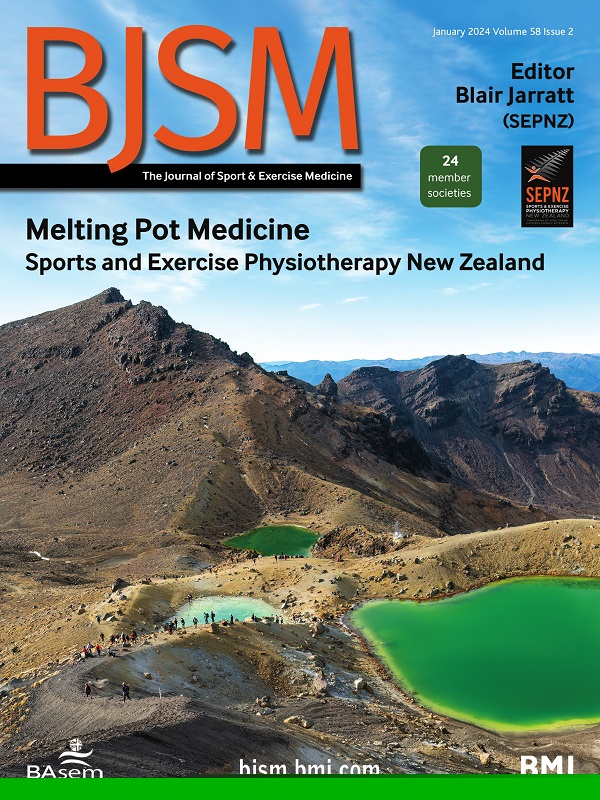打破沉默:解决女运动员盆底功能障碍
IF 11.6
1区 医学
Q1 SPORT SCIENCES
引用次数: 0
摘要
盆底健康被认为是女性运动员健康的10个领域之一,应该包括在疾病和损伤监测中然而,盆底健康和功能障碍通常不包括在运动和运动医学(SEM)培训中。因此,许多女性报告没有被问及她们的盆腔健康,尤其是运动员,报告不太可能向医疗保健专业人员透露盆底功能障碍(PFD)症状这篇社论旨在强调在SEM中公开讨论PFD的重要性,并促进临床医生和运动员之间的支持性对话,以帮助女运动员管理和克服这种情况。PFD是一个总称,包括疼痛、尿失禁和/或大便失禁、排尿障碍和盆腔器官支持减少等几种临床特征PFD的发病率和流行率随着年龄的增长而增加,并受到具体生活事件(如阴道分娩)以及身体活动或体育活动的类型和强度的影响。然而,PFD可以在整个生命的任何阶段表现出来在女性运动员群体中,症状可能在运动员职业生涯的早期就表现出来,而不是与分娩后重返运动有关,症状也可能在生命的过渡阶段出现或加剧,如围绝经期,…本文章由计算机程序翻译,如有差异,请以英文原文为准。
Breaking the silence: addressing pelvic floor dysfunction in female athletes
Pelvic floor health is recognised as one of the 10 domains of female athlete health that should be included in illness and injury surveillance.1 However, pelvic floor health and dysfunction are not typically covered within sport and exercise medicine (SEM) training. Consequently, many females report not being asked about their pelvic health, and athletes, in particular, report being unlikely to disclose pelvic floor dysfunction (PFD) symptoms to a healthcare professional.2 This editorial aims to highlight the importance of addressing PFD openly within SEM and to foster a supportive dialogue between clinicians and athletes to help female athletes manage and overcome this condition. PFD is an umbrella term encompassing several clinical features including pain, compromised urinary and/or faecal continence, impaired voiding and reduced pelvic organ support.3 The incidence and prevalence of PFD increase with advancing age and are influenced by specific life events such as vaginal childbirth, as well as by the type and intensity of physical activity or sports participation. Nevertheless, PFD can manifest at any stage throughout the lifespan.4 In the female athletic population, symptoms can manifest quite early in an athlete’s career rather than being linked to returning to sport after childbirth, and symptoms may also emerge or intensify during transitional life stages such as perimenopause, …
求助全文
通过发布文献求助,成功后即可免费获取论文全文。
去求助
来源期刊
CiteScore
27.10
自引率
4.90%
发文量
217
审稿时长
3-8 weeks
期刊介绍:
The British Journal of Sports Medicine (BJSM) is a dynamic platform that presents groundbreaking research, thought-provoking reviews, and meaningful discussions on sport and exercise medicine. Our focus encompasses various clinically-relevant aspects such as physiotherapy, physical therapy, and rehabilitation. With an aim to foster innovation, education, and knowledge translation, we strive to bridge the gap between research and practical implementation in the field. Our multi-media approach, including web, print, video, and audio resources, along with our active presence on social media, connects a global community of healthcare professionals dedicated to treating active individuals.

 求助内容:
求助内容: 应助结果提醒方式:
应助结果提醒方式:


